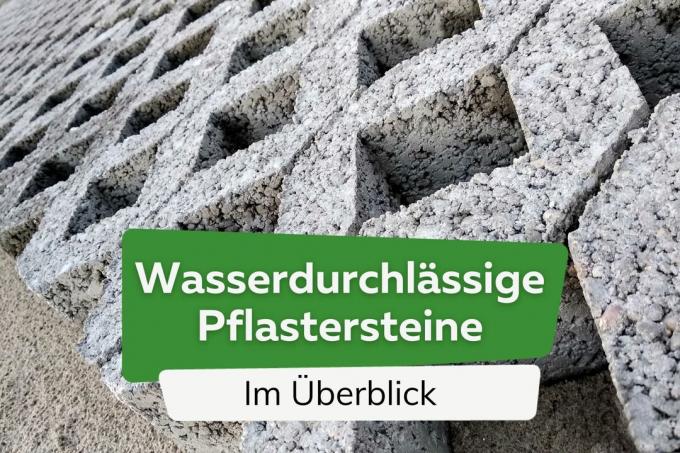
Whether for the garden path, the terrace or the driveway, water-permeable paving stones offer an elegant and environmentally friendly alternative to the conventional connection to the sewage system.
In a nutshell
- Differentiation according to outflow through joints, seepage openings or porous structure
- Wide variety of colors and properties
- Regular repair of leaching and sanding necessary
Table of contents
- definition and classification
- water permeability through joints
- natural stone
- Paving stones with grit attachment
- Water permeability through seepage openings
- City lawn stones
- grass pavers
- Water permeability through porous stone
- concrete slabs
- eco stones
- volcanic rock
- frequently asked Questions
definition and classification
Water-permeable pavement is a paved area that drains precipitation directly into the ground without a flow above ground. This increases the inflow into groundwater and reduces the load on the sewage system during heavy rain.

Tip: Check with your municipality if there is a subsidy for paving with water-permeable pavers. This structural measure often lowers the deduction for sewage charges or is tax deductible.
water permeability through joints
The most common classification relates to the type of drainage. The first option is large gaps between the paving stones. This is the case, for example, with natural stones. With this variant, the water runs off through large gaps and not or hardly at all through the paving stone itself.
natural stone
Natural stones usually have an irregular shape and therefore form large joints when laid. They are particularly suitable as decorative garden paths, but also for paving large areas such as patios and driveways.
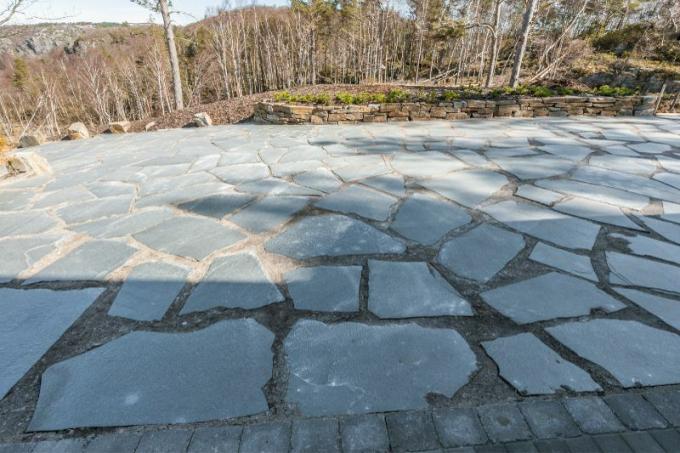
Since natural stone is a collective term, there are various properties and possible applications:
- examples: granite, marble, quartzite, sandstone, slate, travertine
- optics: different colors and shapes, every style can be implemented
- use: path, terrace, partial driveway (stable substructure required)
| Advantages | Disadvantages |
|---|---|
| big variety | weeds in joints |
| good infiltration performance | Flushing of joints possible |
| good accessibility due to level surface |
Paving stones with grit attachment
The term grit attachment refers to additional material on the side of the paving stones, which ensures a larger joint width.
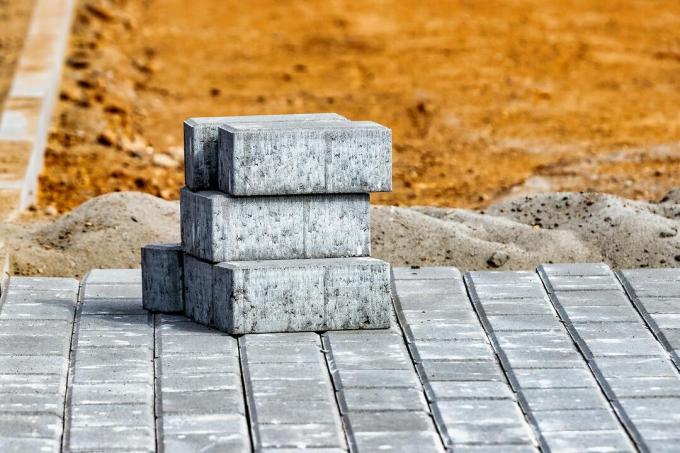
- optics: different colors and shapes, every style can be implemented
- use: path, terrace, driveway, parking space
| Advantages | Disadvantages |
|---|---|
| big variety | weeds in joints |
| uniform look | Flushing of joints possible |
| good accessibility due to level surface |
Water permeability through seepage openings
The second type of water-permeable paving stone has a shape-related drainage opening. In this case, too, the water does not or hardly seeps directly through the stone itself, but through an opening that is present in the shape of the paving stone for this purpose.
City lawn stones
City - Lawn stones have lateral seepage openings through which the water seeps reliably and quickly into the ground. These openings act like significantly widened joints without having a negative effect on stability.
- optics: different colors and shapes
- of course with overgrown seepage openings
- maintained by uniform pattern
- use: driveway, parking space, path, terrace
| Advantages | Disadvantages |
|---|---|
| good infiltration performance | Flushing out of the seepage opening possible |
| high resilience | slightly difficult accessibility |
grass pavers
In the case of grass pavers, the seepage opening is in the middle. They are mainly suitable for traffic areas such as driveways and parking lots, as walking on this uneven surface is uncomfortable in the long run.
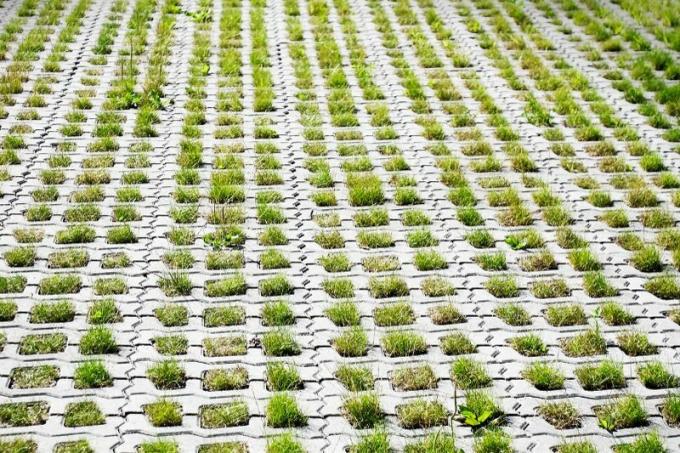
- optics: grey, green, natural with overgrown seepage openings
- cultivated by regular pattern
- use: driveway, parking space
| Advantages | Disadvantages |
|---|---|
| good infiltration performance | Flushing out of the seepage opening possible |
| high resilience | poor walkability |
Tip: Use paving stones with drainage openings as a decorative and useful eye-catcher on large paved areas. If you fill the openings with colored gravel or low-growing plants, for example, this will loosen up the look considerably and allow your yard or terrace to dry out more quickly.
Water permeability through porous stone
The third type, so-called porous stones, are very porous due to their material and the way they are manufactured. Porous stones absorb the water directly and conduct it through their porous structure into the substructure or the ground. Depending on the variety, the properties and possible applications differ greatly from each other.
concrete slabs
concrete slabs absorb a certain amount of moisture and therefore dry faster than other materials.
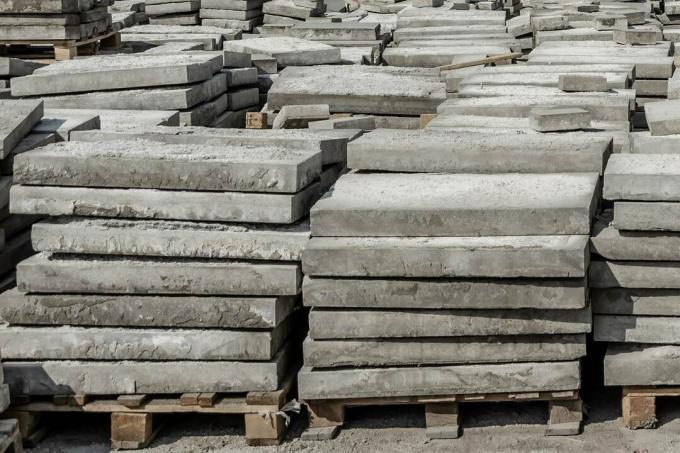
- optics: different colors and shapes
- use: path, terrace, driveway, parking space
| Advantages | Disadvantages |
|---|---|
| good accessibility due to level surface | low infiltration capacity |
| high resilience |
eco stones
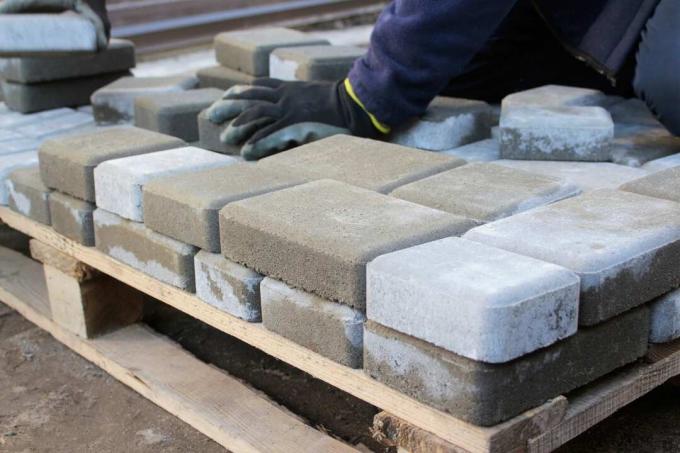
seepage or eco stones Due to the manufacturing process, they have significantly more and larger pores than conventional concrete paving stones. Depending on the type, they are suitable for walkable and trafficked areas.
- optics: different colors and shapes
- use: path, terrace, driveway, parking space
| Advantages | Disadvantages |
|---|---|
| high resilience | silting of the pores |
| good accessibility due to level surface | |
| good infiltration performance | |
| no weeds through small gaps |
volcanic rock
Volcanic rock is very porous and excellent at draining precipitation. However, the resilience is very low. It is therefore only suitable as a decorative material, for example to hide free seepage areas or drains in a visually appealing way.

- Appearance: red - brown to black
- Use: decoration
| Advantages | Disadvantages |
|---|---|
| very good infiltration performance | very low resilience |
| versatile design options |
frequently asked Questions
In the private sector, water-permeable paving stones can be used anywhere. At driveways and parking spaces, however, you should note that leaking chemicals such as oil or soapy water can also seep away and get into the groundwater. Therefore, avoid washing, servicing or repairing your vehicle in such places.
The substructure depends on the use and the expected load.
In any case, it should also be water-permeable. Therefore, compacted sand and gravel are usually a good choice. In the case of heavy loads, such as on driveways, this layer must be thicker than, for example, on paths. You will receive the precise information for your project in a consultation with your specialist dealer.
Depending on which paving stone you choose, the costs are between 10 euros and 25 euros per square meter. For paving, however, you should plan enough time and, if necessary, the help of a specialist. You can compensate for the increased effort and any additional costs with grants and tax breaks.



